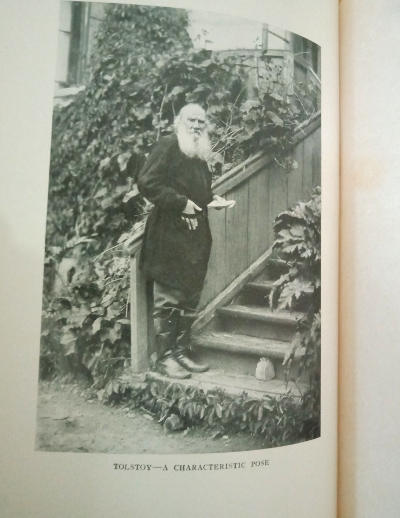About Leo Tolstoy (from Wikipedia):
Leo Tolstoy was a Russian writer who is regarded as one of the greatest authors of all time. He received nominations for the Nobel Prize in Literature every year from 1902 to 1906 and for the Nobel Peace Prize in 1901, 1902, and 1909. That he never won is a major controversy.
Born to an aristocratic Russian family in 1828, Tolstoy is best known for the novels War and Peace (1869) and Anna Karenina (1878), often cited as pinnacles of realist fiction. He first achieved literary acclaim in his twenties with his semi-autobiographical trilogy, Childhood, Boyhood, and Youth (1852–1856), and Sevastopol Sketches (1855), based upon his experiences in the Crimean War. His fiction includes dozens of short stories and several novellas such as The Death of Ivan Ilyich (1886), Family Happiness (1859), “After The Ball” (1911) and Hadji Murad (1912). He also wrote plays and numerous philosophical essays.
In the 1870s, Tolstoy experienced a profound moral crisis, followed by what he regarded as an equally profound spiritual awakening, as outlined in his non-fiction work A Confession (1882). His literal interpretation of the ethical teachings of Jesus, centering on the Sermon on the Mount, caused him to become a fervent Christian anarchist and pacifist. His ideas on nonviolent resistance, expressed in such works as The Kingdom of God Is Within You (1894), had a profound impact on such pivotal 20th-century figures as Mahatma Gandhi[9] and Martin Luther King Jr. He also became a dedicated advocate of Georgism, the economic philosophy of Henry George, which he incorporated into his writing, particularly Resurrection (1899).
About Ilya Tolstoy (from Wikipedia):
Count Ilya Lvovich Tolstoy (22 May 1866 – 11 December 1933) was a Russian writer, and the third child and second son of Leo Tolstoy.
In 1916, Ilya left Russia, and travelled to the United States, arriving in December; and he traveled across the country lecturing about his father’s life and work.
His lecture tour ended in 1917 and he returned to Russia, but left the country when the Bolsheviks came to power later that year. He moved to Paris and then back to the United States, where in September 1920 he married Nadine Perchina, who later became one of the closest disciples of the spiritual teacher Meher Baba. This was the second marriage for both. They moved to Waterbury, Connecticut, and he continued to lecture and write. He pawned some of the family treasures brought from Russia to raise money in 1922. Then, in 1925, along with fellow Russian writer, George Grebenstchikoff, Tolstoy moved to the small Connecticut town of Southbury. They founded a Russian community in the southwest corner of the town. Tolstoy had originally found the area and set up a home earlier in 1923. He loved the way the rolling hills reminded him of the Russian country side. He moved temporarily to California in 1926 to work on a movie version of his father’s novel, Resurrection.
He died on 11 December 1933 in New Haven, Connecticut.
He is best known for his book of memoirs about his father Reminiscences of Tolstoy. He also wrote the short novel The Corpse in 1890 (published posthumously), and the story One Bastard Less which was published in the journal Russian Thought in 1905.





